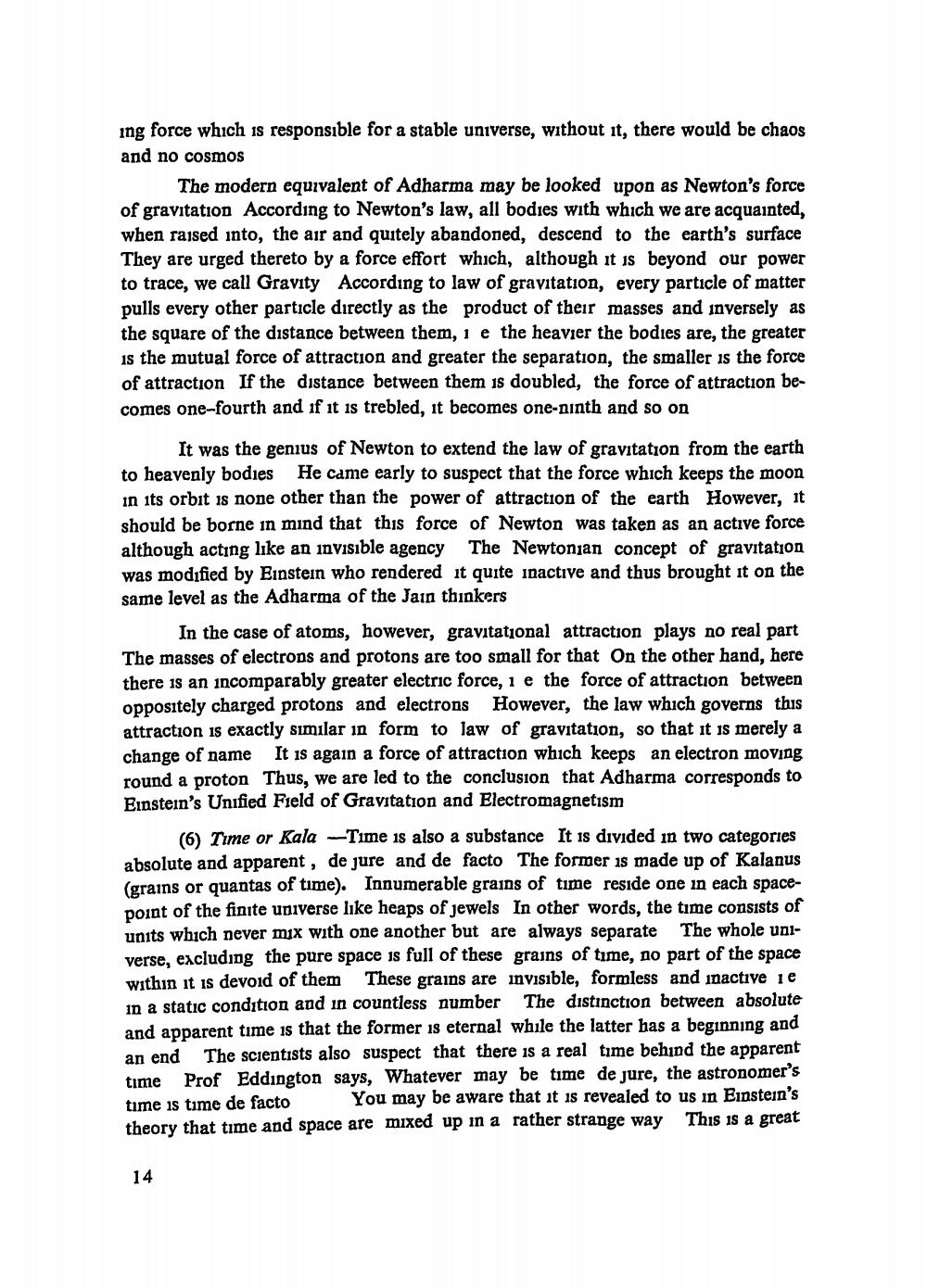________________
ing force which is responsible for a stable universe, without it, there would be chaos and no cosmos
The modern equivalent of Adharma may be looked upon as Newton's force of gravitation According to Newton's law, all bodies with which we are acquainted, when raised into the air and quitely abandoned, descend to the earth's surface They are urged thereto by a force effort which, although it is beyond our power to trace, we call Gravity According to law of gravitation, every particle of matter pulls every other particle directly as the product of their masses and inversely as the square of the distance between them, 1 e the heavier the bodies are, the greater is the mutual force of attraction and greater the separation, the smaller is the force of attraction If the distance between them is doubled, the force of attraction becomes one-fourth and if it is trebled, it becomes one-ninth and so on
It was the genius of Newton to extend the law of gravitation from the earth to heavenly bodies He came early to suspect that the force which keeps the moon in its orbit is none other than the power of attraction of the earth However, it should be borne in mind that this force of Newton was taken as an active force although acting like an invisible agency The Newtonjan concept of gravitation was modified by Einstein who rendered it quite inactive and thus brought it on the same level as the Adharma of the Jain thinkers
In the case of atoms, however, gravitational attraction plays no real part The masses of electrons and protons are too small for that On the other hand, here there is an incomparably greater electric force, 1 e the force of attraction between oppositely charged protons and electrons However, the law which governs this attraction is exactly similar in form to law of gravitation, so that it is merely a change of name It is again a force of attraction which keeps an electron moving round a proton Thus, we are led to the conclusion that Adharma corresponds to Einstein's Unified Field of Gravitation and Electromagnetism
(6) Time or Kala -Time is also a substance It is divided in two categories absolute and apparent, de jure and de facto The former is made up of Kalanus (grains or quantas of time). Innumerable grains of time reside one in each spacepoint of the finite universe like heaps of jewels In other words, the time consists of units which never mix with one another but are always separate The whole universe, excluding the pure space is full of these grains of time, no part of the space within it is devoid of them These grains are invisible, formless and inactive ie in a static condition and in countless number The distinction between absolute and apparent time is that the former is eternal while the latter has a beginning and an end The scientists also suspect that there is a real time behind the apparent time Prof Eddington says, Whatever may be time de jure, the astronomer's time is time de facto You may be aware that it is revealed to us in Einstein's theory that time and space are mixed up in a rather strange way This is a great
14




